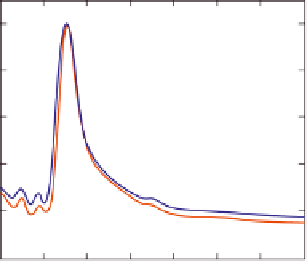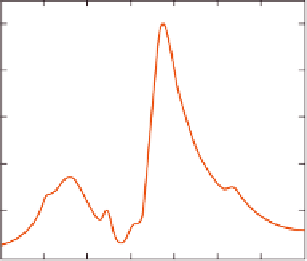Biomedical Engineering Reference
In-Depth Information
(A)
(B)
Reference sensor
Captured virus
Immobilized
antibody
Detection sensor
(C)
(D)
1.0
1.0
8G5-VSV
Ab
VSV
Reference sensor
VSV (control)
0.6
0.6
0.2
0.2
600
700
800
900
600
700
800
900
Wavelength (nm)
Wavelength (nm)
FIGURE 21.15
3D renderings (not drawn to scale) and the experimental measurements illustrate the detection
scheme using optofluidic-plasmonic biosensors based on resonance transmissions due to
extraordinary light transmission effect. Detection of the vesicular stomatitis virus (VSV) is
experimentally observed with a strong red shifting of the plasmonic resonances.
Hatice Altug Research Group, Boston University
[21]
.
in understanding the basics in controlling the nanoscale phenomena, but by strict regulations in the
translational stages too
[24-26]
. This, however, offers a controlled environment for the timely iden-
tification of weaknesses and strengths, which are all critical when it comes to introducing a new
material or technology into the clinical setting. As we see, nanotechnologies have favored our under-
standing of dental tissues at the nanoscale and enabled the design of materials with ultrafine architec-
ture. There is a prospect that probing the structure of dental tissues at ever finer size scales and using
the dynamic resolution capabilities of advanced nanotools will give us answers to some of the puzzles
that occupy dental researchers.
21.8.1.1 Dynamic View of Dental Tissues
The significant advances in dental research that revealed the nanoperspective of dental tissues have
been explored over the past decade. When viewed at the nanoscale resolution, these structures, other-
wise considered as static and stagnant, have fascinating structural dynamism.










